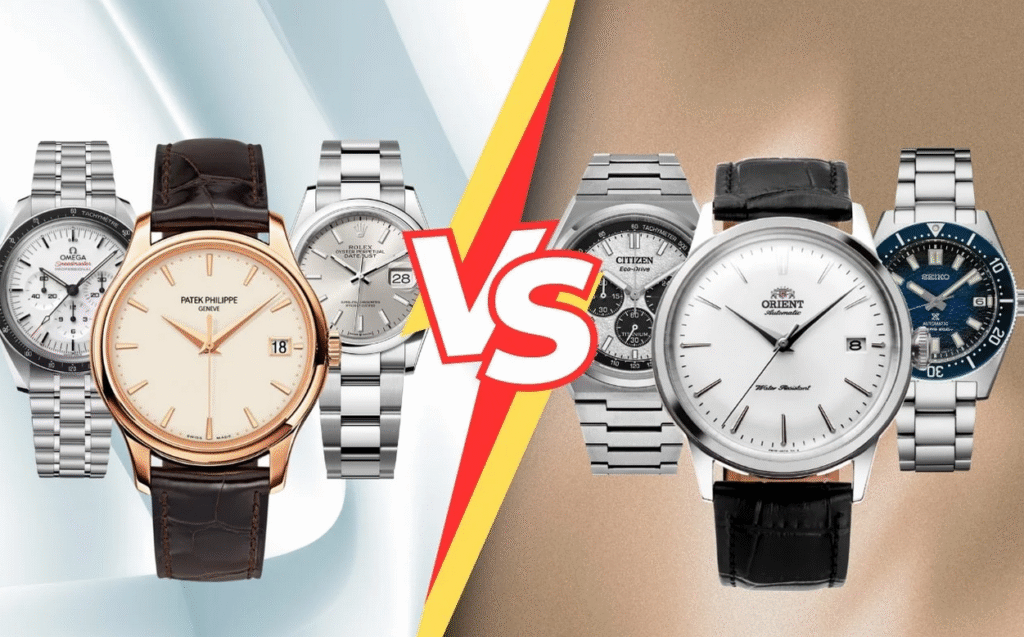When it comes to fine watchmaking, the age-old debate of Swiss-made watches vs Japanese-made timepieces—especially brands like Seiko and Grand Seiko—continues to fascinate collectors and enthusiasts alike. Both regions bring unique strengths and philosophies to horology, making this comparison not just about preference but also about understanding craftsmanship, heritage, and value.
Build Quality: Precision Engineering vs Functional Excellence
Swiss-made watches are synonymous with luxury, elegance, and intricate craftsmanship. Renowned brands such as Rolex, Omega, and Patek Philippe focus heavily on hand-assembled components, premium metals, and often intricate case finishing. Swiss watches are known for their decorative flourishes—Côtes de Genève, perlage, and beveling—that elevate their visual appeal.
Japanese watches, especially from Seiko and Grand Seiko, emphasize functional precision and robustness. Grand Seiko, in particular, rivals Swiss haute horlogerie with its Zaratsu polishing technique and incredible dial textures, showcasing minimalist perfection. While early Japanese watches leaned more toward practical affordability, Grand Seiko has redefined the Japanese standard with elite finishing comparable to the finest Swiss brands.
Movement Technology: Tradition vs Innovation
Swiss watchmakers pride themselves on mechanical movements rooted in centuries-old traditions. Movements like the ETA 2824 or Rolex’s Calibre 3235 are benchmarks in reliability and innovation. Swiss brands continually evolve automatic movements while preserving their mechanical heritage.
Japanese watchmakers, particularly Seiko, are technological trailblazers. They pioneered quartz technology in the 1960s and later introduced Spring Drive—a unique hybrid movement combining mechanical gear trains with electronic regulation. Grand Seiko movements like the 9S and Spring Drive calibers rival Swiss high-end mechanicals for accuracy and longevity.
Cost: Value for Money vs Prestige Pricing
Swiss-made watches often command higher prices due to their branding, heritage, and meticulous handcrafting. For example, a luxury Swiss mechanical watch can range from $2,000 to over $100,000. The price reflects the prestige, materials, and marketing surrounding the brand.
Japanese watches, on the other hand, typically offer more accessible entry points without sacrificing quality. Seiko provides affordable mechanical and quartz models under $500, while Grand Seiko timepieces range from $3,000 to $10,000+, offering exceptional craftsmanship for the price. For many, Grand Seiko represents one of the best value propositions in luxury watchmaking.
Prestige and Heritage: Centuries vs Disruption
Swiss watchmaking enjoys a legacy that spans centuries, steeped in tradition, exclusivity, and global acclaim. Owning a Swiss watch often signifies status, luxury, and adherence to a time-honored craft.
Japanese brands have taken a different route—challenging conventions with innovation and precision. Seiko disrupted the industry with the quartz revolution, and Grand Seiko is now regarded as a top-tier luxury brand in horology circles, earning growing respect in Western markets.
The Swiss vs Japanese watch debate isn’t about which is better—it’s about choosing what aligns with your values. If heritage, prestige, and artisanal beauty matter most, Swiss-made watches are timeless investments. If you value innovation, durability, and high performance at a competitive price, Japanese brands like Seiko and Grand Seiko deliver exceptional value. Ultimately, both traditions offer something remarkable: a devotion to excellence in their own distinct ways.
